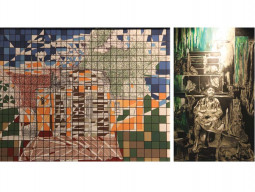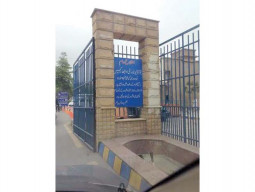
"It's somewhere our responsibility to ingrain it at this stage," said Alfiya Halai, a lecturer who teaches design to foundation-year students. "If we are going to expose our own culture, that's what they are going to learn," she added.
So far workshops have been conducted for first-year students at the undergraduate level. These workshops are followed by exhibitions and the students have already displayed what they learned on truck art and puppetry.
From a vision to reality: Behold the future of Burnes Road
Renowned and experienced craftsmen have been visiting and aiding students in skill building, something that students really miss in their intensive, classroom study. "The craftsmen teach you in baby steps," said a foundation-year student, Bushra Saleem.
"I found the truck artists to be very patient. With them, it's more about technique and skill while our teachers want us to search and learn on our own," she said.
The faculty members believe that, unless the tradition is celebrated, there is no way to move it forward. "The work of local craftsmen is dying and no new people are coming to replace them," pointed out IVS assistant professor Aliya Yousuf. "There is no documentation, no set of guidelines for our craft," she said.
IVS, DUHS make their campuses gun-free zones
Yousuf narrated how a visit to Ranikot, Sindh's own version of the Great Wall, was an eye-opening experience for students when they got to know about the historical background. The teachers also agree that this revival of cultural symbols in their work also alters perception of students especially regarding how they look at their own heritage. "The exposure to cultural elements produces a 'wow' factor," she said. "Once the students get involved, the fear towards it dissipates. When students go out in the field, it becomes part of their memory bank. Once this will happen, crafts will emerge." Citing examples of how truck art got picked up at the local scene, the faculty is positive about the connection that such measures will make in the coming days. "It's not that youngsters shun local culture. It's just that they don't know about it," added Halai.
Published in The Express Tribune, November 17th, 2015.






































COMMENTS
Comments are moderated and generally will be posted if they are on-topic and not abusive.
For more information, please see our Comments FAQ